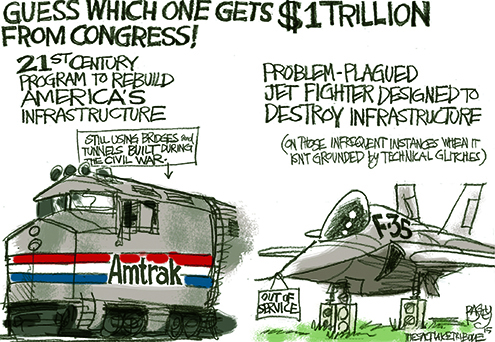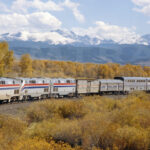Long-Distance Trains: No Longer Special?

I’ve always wondered: Is it possible that after a long-distance train completes its run, all those disposable plastic plates and cups and glasses that were used in the dining car might actually cost more than what Amtrak would have to pay for someone to wash real china?
It’s my understanding that there is now only one employee in charge of the diner/lounge on the City of New Orleans, effectively guaranteeing very slow service to all passengers dining there. (I’ll be aboard train 58 in a week and will report here if that is still the case.)
It’s a very nice touch to find a small bottle of chilled champagne waiting for you when you board . . . or to wake up and find that a copy of USA Today was slipped under the door of your roomette in the wee hours.
As I write this, a mug of coffee is sitting on a coaster decorated with the Coast Starlight logo, a gift I found in my roomette on a ride up to Seattle at least a dozen years ago.
I’m leaving tomorrow to attend the NARP meetings in Denver, plus a couple of additional stops. By the time I return home, I will have spent five nights aboard six trains and had more than a dozen meals in Amtrak dining cars. The menu will be virtually identical in every one of them.
From my personal observations, many sleeping car passengers are beginning to notice these and other examples of Amtrak’s cost-cutting. For them, a long-distance train is no longer a special and memorable experience. The trip was OK, they’ll say, and they had a nice time. But once is enough.
That’s not good.



There seems to be a lack of interest by US government in all types of public transport other than air. I have planned a trip next May/June beginning in Toronto, train to Jasper then to Prince Rupert (partly inspired by your reports). However I then want to go up through Alaska and experience the train from Skagway and later the train from Seward to Anchorage, Denali and Fairbanks. I have booked a small ship 7 night cruise from Juneau but cannot go any further until the Summer timetable is published for the ferries on the Alaska Marine Highway which will probably be in December but will depend on the Alaska State budget which is apparently in a great amount of debt. Of course I could fly and avoid this hassle but I only fly when no alternative, mainly across the oceans.
First, you will enjoy the Jasper-Prince Rupert trip. (You know, I assume, that you will have to book a hotel room in Prince George, where the train stops the first night.) If the Alaska portion doesn’t work out, there’s a ferry from Prince Rupert to Port Hardy on Vancouver Island. My wife and I rented a car there and took two days to drive to Victoria. Doing it again, I would spend more time on that drive. You’re right, of course, about the U.S. Government’s lack of support for anything but roads and air … and not doing a good job with roads, not with60,000 bridges needing repair.
Hi Jim, I am sure “one person runs diner” means the person in charge of the accountability, or the paperwork, as we used to say, that would be the LSA. This goes back through the 80’s & earlier, when stewards were being eliminated, cost cutting, & downsizing the diner crew. Usually, hopefully, you will have the LSA, & 2 waiters on that type of diner service, maybe 1 waiter if ridership is at a low peak. Anyway, I’m sure you find out & report back to us. Safe travels.
I will, indeed. My comment was based on an article by Andy Selden in which he reported on a trip he took on the CONO a little more than a year ago. He reported one person running the cafe car, noting that a car attendant from oner of the sleepers lent a hand for part of the time.